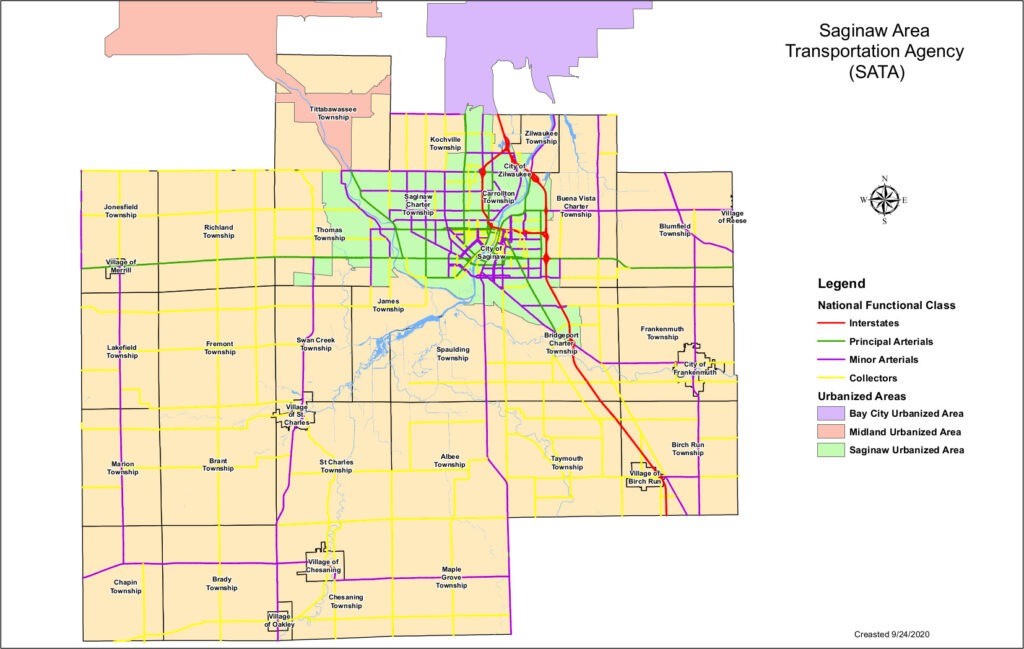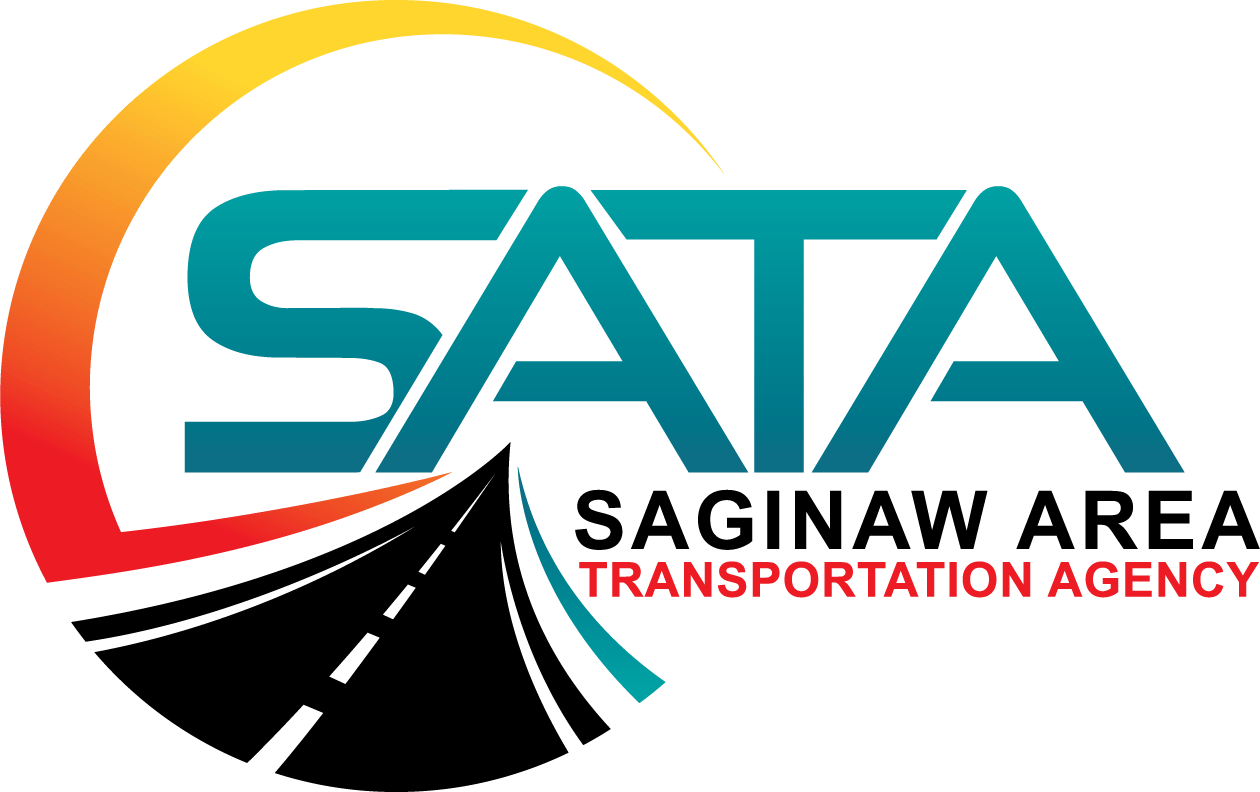Our vision is to promote regional transportation planning discussions and decision-making that improve the prosperity and quality of life where we all can benefit.
Our goals are to look ahead collaboratively and objectively using a database driven approach to prioritizing improvement projects while maximizing limited transportation funds in the Saginaw urbanized area.
Our objectives are a continual shifting forward initiative to improving safety, preserving existing assets, expanding access to alternative modes, and economic growth while emphasizing the growing need to make transportation services more equitable and accessible for all.
SATA’s organizational structure consists of a Policy, Technical Committees, and staff. You can find out more about each group through the links above. See the “Committee Membership” tab for a list of leadership and units of government participating in the SATA’s organization.
On October 1, 2020, the Metropolitan Planning Organization (MPO) for Saginaw County was re-designated and a new name was established for the MPO which is now called the Saginaw Area Transportation Agency (SATA) formally known as the Saginaw Metropolitan Area Transportation Study (SMATS). The units of government forming the Intermunicipality Committee all adopted resolutions to form the entity and a final stamp of approval from the Governor of State of Michigan effective the first day of October 2020. SATA is now formally recognized as an Intermunicipality Committee under the Michigan Public Act 200 of 1957 and is the newly re-structured designated (MPO) responsible for transportation policy, planning, and investment decision-making in the Saginaw urbanized area. Our name and committee structure has changed however, our responsibilities haven’t. The organization’s vision, core values, and responsibilities are more defined. The restructuring of SATA has sharpened the agency’s vision, goals, and objectives which has allowed for more creativity in the operation of SATA, strategic planning and implementation of transportation investments, improving safety, enhancing access, mobility, and efficiency while safeguarding environmental resources. The new structure streamlines the approval of time-sensitive road, and transit projects, enhanced the utilization of federal, state, and local transportation dollars, and provides a more efficient investments link in transportation infrastructure and services that promotes regional economic development opportunities
Five Core Function:
- Community Assistance – Communities can look to SATA for assistance with a number of services including data collection, map development, plan reviews, grant support, and funding application assistance. SATA also works with stakeholders in locally initiated planning efforts.
- Funds Management – Annually, SATA prioritizes millions of federal transportation dollars to spend on eligible projects that improve the access and mobility of all people in Saginaw County. SATA assists communities to compete for federal and state grant programs.
- Planning Process – SATA and its Technical and Policy Committees, representing communities in Saginaw County, implement federal and state transportation policies. The committees are charged with evaluating and enacting local transportation policies and prioritizing projects that impact Saginaw County.
- Public Forum – Implementing an effective and equitable vision for Saginaw County’s transportation system depends on a well-informed, ongoing discussion with the public. SATA facilities this continuous dialogue to inform decision-makers on county transportation issues.
- Vision for the Future – SATA works with the public and committee members to develop a shared vision for the transportation network and options for its various users.
Responsibilities:
- The MPO carries out three major work activities to meet specific federal requirements.
- These are:
- The development and maintenance of the Long Range Transportation Plan (LRTP) through a “continuing, comprehensive, and cooperative (3C)” planning process.
- The biennial development of a three-year program for highway and transit improvements. This program is known as the Transportation Improvement Program or TIP.
- The annual adoption of a comprehensive one-year planning program: the Unified Planning Work Program or UPWP that describes and coordinates the individual transportation planning activities of all agencies in the area.


